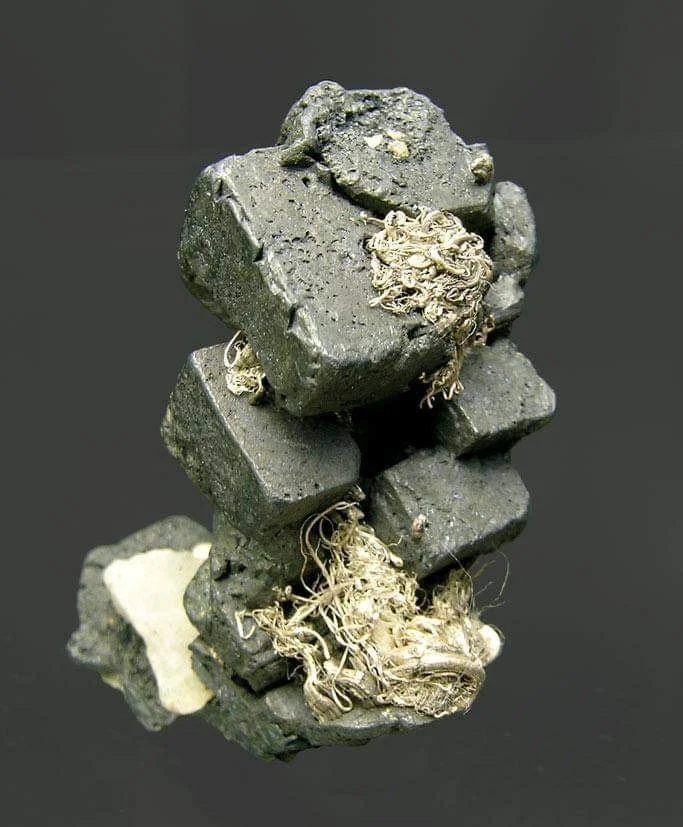RARE GOLD TELLURIDE
Gold telluride is a rare mineral that is found in earth rocks. It is primarily associated with gold mineralization, which is often associated with metal sulphide deposits.

Gold telluride is a chemical compound with the formula AuTe2. It occurs as metallic gray or blackish crystals, often associated with other minerals such as pyrite, galena, chalcopyrite and sphalerite. Gold telluride deposits are typically associated with fault or fracture zones in rocks, where gold- and tellurium-rich hydrothermal fluids have circulated and reacted with host minerals.
Gold telluride deposits are relatively rare, but they are found in several regions of the world, including South Africa, Australia, China, Mexico, Romania and the United States. The most important deposits are often associated with complex hydrothermal systems, such as gold-bearing quartz veins, skarns and copper-bearing porphyries.

Recovering gold from telluride ores can be more difficult than from conventional gold ores due to the presence of tellurium. Tellurium can form volatile compounds during heat treatment or be adsorbed onto the surfaces of ore particles, making gold extraction more difficult. However, new technologies such as high pressure cyanidation and heap leaching have improved the extraction of gold from telluride ores.
In conclusion, gold telluride is a rare mineral that is found in earth rocks and is often associated with metal sulphide deposits. Although recovering gold from telluride ores can be more difficult than recovering from conventional gold ores, new technologies have improved the extraction of gold from these ores.


